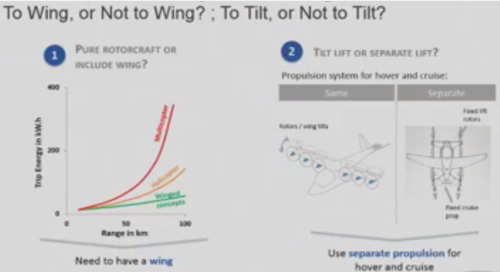Reaper
ACCESS: Secret
- Joined
- 31 March 2009
- Messages
- 275
- Reaction score
- 91
I am really interested in the whole urban mobility / eVTOL trend and I wonder how this will play out in the future. That is why I am currently looking at the ConOps and next doing a conceptual design loop for an existing eVTOL.
In the whole eVTOL / urban air vehicle discussion, it becomes clear that the Concept of Operation and the requirements, which drive the design, are really open, resulting in a variety of different concepts (multicopter, eVTOL tilt rotors/Wings...) being pursued by different companies. According to Aurora FS / Airbus the decision point for wing/no wing is a range bigger/smaller than 50km.
Now assuming there would be business customers using eVTOLs first, who are able to trade time for money (getting from the airport to the center of a city like a heli shuttle) and then normal people later (maybe using the plane for commuting). With this is mind it looks that a smaller multicopter would make more sense (from using the energy more efficiently) since most of mega cities (Sao Paolo, Mexico city...) only have a maximum diameter of 50km.
What do you think about these assumptions?
In the whole eVTOL / urban air vehicle discussion, it becomes clear that the Concept of Operation and the requirements, which drive the design, are really open, resulting in a variety of different concepts (multicopter, eVTOL tilt rotors/Wings...) being pursued by different companies. According to Aurora FS / Airbus the decision point for wing/no wing is a range bigger/smaller than 50km.
Now assuming there would be business customers using eVTOLs first, who are able to trade time for money (getting from the airport to the center of a city like a heli shuttle) and then normal people later (maybe using the plane for commuting). With this is mind it looks that a smaller multicopter would make more sense (from using the energy more efficiently) since most of mega cities (Sao Paolo, Mexico city...) only have a maximum diameter of 50km.
What do you think about these assumptions?

